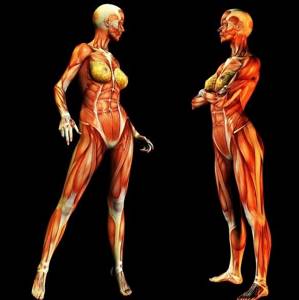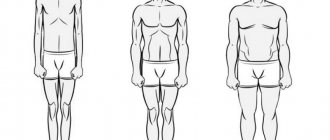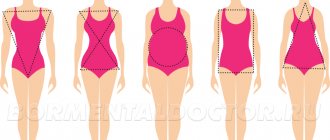Men are no less concerned than women, and sometimes more, about their appearance, health and harmonious development of the body. This interest is especially relevant for tall men. After all, if a person is 186 cm tall or more, then on the street the eyes of all passers-by are riveted on him, simply because he stands out from the crowd. A tall man cannot afford not only to be unkempt, but also to be physically undeveloped. After all, with a lack of muscle mass or with excess weight, he looks ridiculous or downright funny, and this becomes the reason for the development of all kinds of complexes.
What affects the weight-to-height ratio?
How much should a man weigh 186 cm? It seems that the answer is obvious - no less than 86 kilograms. But everything is not as simple as it seems. It is not so rare to see tall men who do not experience any problems with weight and are attentive to their own health and appearance, giving the impression of some awkwardness and disharmony.
This happens because, in addition to the direct relationship between weight and height, other factors also influence a person’s appearance. The main ones are:
- age and accompanying physiological characteristics;
- body type.
Without taking these characteristics into account, you should not start taking care of your own appearance. Any man who is 186 cm tall or more, who takes care of his body, but does not pay attention to the innate features of the figure and age-related physiological nuances, will not look harmonious and beautiful.
Relationship between body weight and age
Oddly enough, a healthy height-to-weight ratio depends on a man's age. Without taking it into account, the calculated data will be unreliable, so in different years different weight in kilograms can be considered normal.
To calculate the best ratio taking into account a man’s age, you will have to use a certain formula: the optimal weight is equal to the value calculated as follows: 50 + 0.75 (height in cm - 150) + (age - 20) / 4.
Accordingly, the optimal weight for a 50-year-old man with a height of 180 cm will be 80 kg. This is calculated simply: 50 + 0.75 (180 - 150) + (50 - 20) / 4.
The resulting normal relationship using this formula is considered generalized. The fact is that this formula does not take into account body types, which we will consider later.
About body types
Without a doubt, there are no two identical human bodies; each person is individual. However, there are three major anatomical body types that tall men whose height is 186 cm or more should focus on when starting to improve their own appearance.
The main anatomical types of male physique:
- normosthenic;
- hypersthenic;
- asthenic.
Each body type is characterized by certain features both in appearance and physiology. These are the ones that need to be taken into account.
Body types
As you already understood, in some cases, to calculate which ratio is considered optimal, you need to take into account your body type. There are three types in total:
- Hypersthenic. Men with such a physique have short limbs with a neck, and fairly broad shoulders. The figure as a whole appears strong, stocky and squat.
- Normostenic. This type of physique is found in proportionate men with normal build.
- Asthenic. These are people with long arms, legs and necks, narrow shoulders. They are usually wiry and drier due to minimal fat deposits.
It is not difficult to identify your body type for subsequent calculation of ideal height and weight, taking into account or not taking into account age. You need to do the simplest manipulations. Grasp the wrist of the other limb with one hand and try to connect the thumb with the index finger in the place of the protruding bone:
- if you grabbed it without difficulty, you have an asthenic physique;
- if with difficulty, you are normosthenic;
- if your fingers do not reach each other, you are a hypersthenic.
Another method will require the use of a measuring tape. If your wrist circumference is less than 17 cm, you are asthenic; from 17 to 20, you are normosthenic; over 20 cm, you are hypersthenic.
What should you pay attention to?
Men with a normosthenic physique, as a rule, have no difficulties with their appearance. They have a wide shoulder span, a not particularly long neck and proportional limb sizes. The metabolism of such people is moderate, the metabolism is neither accelerated nor slowed down. The biggest challenge faced by men with this body type who are 186cm or taller is stooping and a lack of muscle definition.
Such people do not need to “blindly” gain weight or “swing” to unimaginable sizes in the gym. They look harmonious when they correspond to classical Roman or Greek proportions, which can be seen visually by looking at any of the ancient statues, for example, Apollo. Men with a height of 186 cm and this type of figure should weigh no more than 82 kg and no less than 72.
With a hypersthenic physique, as a rule, there is a slowdown in the metabolic process in the body. Accordingly, moderation should be observed in diet and preference should be given to healthy and easily digestible foods.
Outwardly, these people, with their tall stature, resemble fairy-tale heroes, Vikings, Roman legionnaires or King Kong. They have an extremely powerful torso, a very wide shoulder span, but at the same time a short neck and not particularly long limbs. In other words, these are stocky, outwardly strong, reliable and strong men.
Such people should not try to become slimmer; if they are thin, they will look unpresentable. However, avoiding extra pounds is also important. The ideal weight for such men is between 76 and 86 kilograms.
It is very difficult for thin young men whose height has exceeded 186 to look beautiful and harmonious. A guy’s height that exceeds the average, in the presence of an asthenic body type, often becomes a source of youthful complexes.
Asthenics have long limbs and necks, a narrow chest and not very pronounced shoulder width. They give the impression of grace and sophistication. The metabolic rate in the body of such people is high, and fat deposits are practically absent.

The most common mistake that tall men with this body type make is a manic desire to gain weight and “flex” their muscles. Of course, with the help of special sports supplements and diets in combination with exercise, this can be achieved. However, they will not look harmonious; they will turn into a “mountain of muscles”, devoid of natural charm and charm. The best weight for men with this type of figure with a height of 186 cm is the interval between 69 and 74 kilograms. Of course, natural thinness and a high metabolic rate cannot replace exercise; this should not be forgotten.
What is obesity
Excessive formation and deposition of adipose tissue in the human body is called obesity or liposis. Excess fat accumulates in the subcutaneous tissue, omentum and other tissues of the human body. This process is a disease that is characterized by an increase in the total weight of the human body by more than 20% of the norm. Excess weight causes psychophysical discomfort. But what’s worse is that a large mass entails pathologies of the musculoskeletal, cardiovascular, reproductive and digestive systems.
Causes
The accumulation of excess fat deposits often occurs due to an imbalance between the supply of energy resources from food and their expenditure. Energy costs vary depending on each person's lifestyle. When more calories come from food than the body expends, the unspent nutritional resources are converted into fat. The source of extra pounds can be many factors; it all depends on the characteristics of the human body.
Causes of liposis:
- overeating (90% of cases);
- physical inactivity (70% of cases);
- endocrine diseases;
- metabolic disorder;
- diabetes.;
- hereditary predisposition;
- physiological conditions (pregnancy, lactation, menopause).

Types
To calculate the type of liposis, it is first necessary to know the normal weight according to height. A normal indicator of human body weight is considered to be the number obtained by subtracting the number 100 from the height in centimeters. From the resulting value you need to subtract 15% for women and 10% for men. A BMI corresponding to the average norm is considered to be from 18 to 25 kg/m2.
Depending on the indicators of the human body mass index, the stages of obesity are classified into 4 types:
- I – deviation from the normal value by 10–28%.
- II – deviation from the norm by 30–48%.
- III – exceeding the prescribed norm by 50–98%.
- IV – difference from the normal value by 100% or more.
How to determine your body type and calculate weight for a height of 186 cm?
Determining your body type is not that difficult; it can be done simply by looking in the mirror. If you have difficulty with a visual assessment, you can resort to using a centimeter. You will have to measure your wrist.
Relationship between wrist size and body type:
- less than 17 cm – asthenic;
- 17-20 cm – normosthenic;
- more than 20 cm – hypersthenic.
Of course, these assessment parameters only apply to adult men.

You can calculate the optimal ratio of weight and height using Brock's formula. 110 men under forty should be subtracted from their height. Those who have already crossed this age line need to subtract the number “100”. With an asthenic body type, the result obtained should be reduced by 10%. For hypersthenics, the resulting number, on the contrary, should be increased by 10%. Normosthenics do not need to make any additional calculations.
Formulas for determining the optimal ratio of weight and height
Ecology of life. There are different formulas for determining the optimal ratio of weight and height. But all of them are very, very conditional, since they do not take into account many factors...
There are different formulas for determining the optimal ratio of weight and height. But all of them are very, very conditional, since they do not take into account many factors: age, gender and physiological characteristics of a person. Therefore, excess fat must be assessed not only by the conditional ratios presented in this table, but also by appearance, skin thickness and a number of other factors. With the same height and weight, one person may look plump, while another may look completely normal.

The objective parameter of an ideal body is the percentage of fat and musculoskeletal tissue. For men, the norm is 9 - 15% fat of total body weight, and for women - from 12 to 20%.
Quetelet index
Knowing the Body Mass Index (BMI), you can judge whether you are obese or underweight. The index is calculated for adult men and women from 20 to 65 years old. Results may be false for pregnant and breastfeeding women, athletes, the elderly and adolescents (under 18 years of age). Among the many different methods for calculating ideal weight, the most popular method is the height-weight indicator, body mass index - Quetelet index.
Formula: body weight in kg divided by height in meters squared B/(P*P)
For example: height 170 cm, weight 65 kg. So 65: (1.7 * 1.7) = 22.5
The norm for men is 19-25. For women - 19-24.
| Body mass index | Classification | Risk of comorbidities |
| Less than 18.5 | Underweight | Low (increased risk of other diseases) |
| 18.5 – 24.9 | Normal body weight | Ordinary |
| 25.0 – 29.9 | Excess body weight (pre-obesity) | Elevated |
| 30.0 – 34.9 | Obesity I degree | High |
| 35.0 – 39.9 | Obesity II degree | Very tall |
| 40.0 or more | Obesity III degree | Extremely high |
The Quetelet index shows quite well the amount of fat in the body, but does not indicate how fat is distributed, in other words, it does not provide a visual or aesthetic picture. But you can test your body for perfection using one more formula.
The distribution of fat throughout the body is determined by the ratio: waist volume (at the level of the navel) divided by the volume of the buttocks.
- Norm for men: 0.85
- For women: 0.65 - 0.85.
Does age affect height-weight ratio?
The answer is clear. Yes, of course it does. It has been proven that the weight of men and women should gradually increase with age - this is a normal physiological process. The kilograms that some people consider “extra” may not actually be so. You can use a formula based on age to determine your optimal weight.
P is height in this case, and B is age in years. Body weight = 50 + 0.75 (P - 150) + (B - 20) : 4
| Height in cm | Age | ||||||||||||||
| 20-29 | 30-39 | 40-49 | 50-59 | 60-69 | |||||||||||
| Floor | |||||||||||||||
| M | AND | M | AND | M | AND | M | AND | M | AND | ||||||
| 150 | 51.3 | 48.9 | 56.7 | 53.9 | 58.1 | 58.5 | 58.0 | 55.7 | 57.3 | 54.8 | |||||
| 152 | 53.1 | 51.0 | 58.7 | 55.0 | 61.5 | 59.5 | 61.0 | 57.6 | 60.3 | 55.9 | |||||
| 154 | 55.3 | 53.0 | 61.6 | 59.1 | 64.5 | 62.4 | 63.8 | 60.2 | 61.9 | 59.0 | |||||
| 156 | 58.5 | 55.8 | 64.4 | 61.5 | 67.3 | 66.0 | 65.8 | 62.4 | 63.7 | 60.9 | |||||
| 158 | 61.2 | 58.1 | 67.3 | 64.1 | 70.4 | 67.9 | 68.0 | 64.5 | 67.0 | 62.4 | |||||
| 160 | 62.9 | 59.8 | 69.4 | 65.8 | 72.3 | 69.9 | 69.7 | 65.8 | 68.2 | 64.6 | |||||
| 162 | 64.6 | 61.6 | 71.0 | 68.5 | 74.4 | 72.2 | 72.7 | 68.7 | 69.1 | 66.5 | |||||
| 164 | 67.3 | 63.6 | 73.9 | 70.8 | 77.2 | 74.0 | 75.6 | 72.0 | 72.2 | 70.7 | |||||
| 166 | 68.8 | 65.2 | 74.5 | 71.8 | 78.0 | 76.6 | 76.3 | 73.8 | 74.3 | 71.4 | |||||
| 168 | 70.8 | 68.5 | 76.2 | 73.7 | 79.6 | 78.2 | 79.5 | 74.8 | 76.0 | 73.3 | |||||
| 170 | 72.7 | 69.2 | 77.7 | 75.8 | 81.0 | 79.8 | 79.9 | 76.8 | 76.9 | 75.0 | |||||
| 172 | 74.1 | 72.8 | 79.3 | 77.0 | 82.8 | 81.7 | 81.1 | 77.7 | 78.3 | 76.3 | |||||
| 174 | 77.5 | 74.3 | 80.8 | 79.0 | 84.4 | 83.7 | 82.5 | 79.4 | 79.3 | 78.0 | |||||
| 176 | 80.8 | 76.8 | 83.3 | 79.9 | 86.0 | 84.6 | 84.1 | 80.5 | 81.9 | 79.1 | |||||
| 178 | 83.0 | 78.2 | 85.6 | 82.4 | 88.0 | 86.1 | 86.5 | 82.4 | 82.8 | 80.9 | |||||
| 180 | 85.1 | 80.9 | 88.0 | 83.9 | 89.9 | 88.1 | 87.5 | 84.1 | 84.4 | 81.6 | |||||
| 182 | 87.2 | 83.3 | 90.6 | 87.7 | 91.4 | 89.3 | 89.5 | 86.5 | 85.4 | 82.9 | |||||
| 184 | 89.1 | 85.5 | 92.0 | 89.4 | 92.9 | 90.9 | 91.6 | 87.4 | 88.0 | 85.8 | |||||
| 186 | 93.1 | 89.2 | 95.0 | 91.0 | 96.6 | 92.9 | 92.8 | 89.6 | 89.0 | 87.3 | |||||
| 188 | 95.8 | 91.8 | 97.0 | 94.4 | 98.0 | 95.8 | 95.0 | 91.5 | 91.5 | 88.8 | |||||
| 190 | 97.1 | 92.3 | 99.5 | 95.8 | 100.7 | 97.4 | 99.4 | 95.6 | 94.8 | 92.9 | |||||
Broca's formula: identifying height-age-weight relationships
One of the most popular methods for calculating ideal weight is Brock's formula. It takes into account the ratio of height, weight, body type and age of a person.
Broca's formula for people under 40 years old is “height (in cm) minus 110”, after 40 years - “height (in cm) minus 100”.
At the same time, people with an asthenic (thin-boned) body type must subtract 10% from the result, and people with a hypersthenic (broad-boned) body type must add 10% to the result.
How to determine your body type?
Body types are usually divided into THREE types:
- normosthenic,
- hypersthenic,
- asthenic.
In order to find out what your body type is, just measure the circumference of the thinnest place on your wrist with a centimeter. The resulting circumference in centimeters will be the necessary indicator (Soloviev index).
| Solovyov index | Body type | Typical for this body type | |
| for men | for women | ||
| 18-20 cm | 15-17 cm | normosthenic (normal) | the physique is distinguished by the proportionality of the main dimensions and their correct ratio |
| more than 20 cm | more than 17 cm | hypersthenic (wide-boned) | In people with a hypersthenic (broad-boned) body type, the transverse dimensions of the body are much larger than in normosthenics and especially asthenics. Their bones are thick and heavy, their shoulders, chest and hips are wide, and their legs are short. |
| less than 18 cm | less than 15 cm | asthenic (thin-boned) | In people with an asthenic (thin-boned) body type, longitudinal dimensions prevail over transverse ones: long limbs, thin bones, long, thin neck, muscles are poorly developed. |
Nagler's formula for height and weight ratio
There is a Nagler formula that allows you to calculate the ideal ratio of weight and height. For 152.4 cm of height there should be 45 kilograms of weight. For every inch (that is, 2.45 cm) over 152.4 cm there should be another 900 grams, plus another 10% of the resulting weight.
John McCallum's formula for girth ratio
One of the best formulas, created by expert methodologist John McCallum. McCallum's formula is based on measuring the circumference of the wrist.
1. 6.5 wrist circumference is equal to chest circumference.
2. 85% of the chest circumference is equal to the hip circumference.
3. To get your waist circumference, you need to take 70% of your chest circumference.
4. 53% of the chest circumference is equal to the hip circumference.
5. For the neck circumference you need to take 37% of the chest circumference.
6. Bicep circumference is about 36% of chest circumference.
7. The girth for the lower leg is slightly less than 34%.
8. The circumference of the forearm should be equal to 29% of the circumference of the chest.
But not everyone’s physical data will exactly correspond to these ratios; the numbers have an average, statistical average value.
A few more options for height and weight ratios
- The physique is considered ideal if the waist circumference is 25 cm less than the hip circumference, and the hip circumference is approximately equal to the chest circumference.
- The waist circumference should be equal to “height in centimeters - 100”. That is, a woman with a height of 172 cm will be proportionally built if her waist circumference is 72 cm, her hip and waist circumference is about 97 cm, that is, if she wears a clothing size of 48.
- If the hip circumference is less than the chest circumference, and the waist circumference is 20 cm less than the hip circumference, then this figure is called an “apple”. If the chest circumference is less than the hip circumference, and the waist circumference is 30 cm or more less than the hip circumference, this is a pear-shaped figure.
- For women and girls of average height - from 165 to 175 cm - this observation turned out to be fair. Their waist circumference in centimeters is approximately equal to their weight in kilograms. One kilogram of weight loss results in a decrease in waist size of one centimeter.
As you can see, there are many ways to calculate the optimal ratio of your height and body weight, depending on a variety of factors. But no matter how you make the calculations, the main thing is that your weight is COMFORTABLE for you. So that you feel easily and freely in your own body, love yourself and enjoy life to the fullest! - without falling into depression because during the calculations you (what if!) discovered an “excess” or “lack” of kilograms. published
PS And remember, just by changing your consumption, we are changing the world together! © econet
Join us on Facebook and VKontakte, and we are also on Odnoklassniki
Calculations by John McCallum
There is another unusual formula that allows men to calculate their ideal weight-to-height ratio. Calculations are based on measurements of different parts of the body using a measuring tape. Here are the ideal parameters calculated using the example of a well-built man:
- hip circumference = chest circumference * 0.85;
- chest circumference = 6.5 * wrist circumference;
- waist = 0.7 * chest;
- neck = 0.37 * chest;
- biceps = 0.36 * chest;
- lower leg = 0.34 * chest;
- forearm = 0.29 * chest.
Of course, if you have an asthenic or hypersthenic physique, the data will be different. A normal deviation is considered to be 10% of the given values.
We use the Nagler technique
To determine the height-to-weight ratio for guys over the age of 18, the Nagler formula works well. Using this formula, the correspondence of mass to overall height in centimeters is determined.
The formula is based on the fact that with a height of 152.4 centimeters, a person should weigh 45 kg, and for every 2.45 cm, 900 g are added. Such strange figures are explained by the fact that the calculations were originally thought out for inches, not centimeters. To the resulting figure you need to add 10% of body weight and the resulting range will be the norm.
In order not to manually add 2.45 cm each and take into account weight, use the formula: 48 + 2.7 * (height in centimeters - 60).










